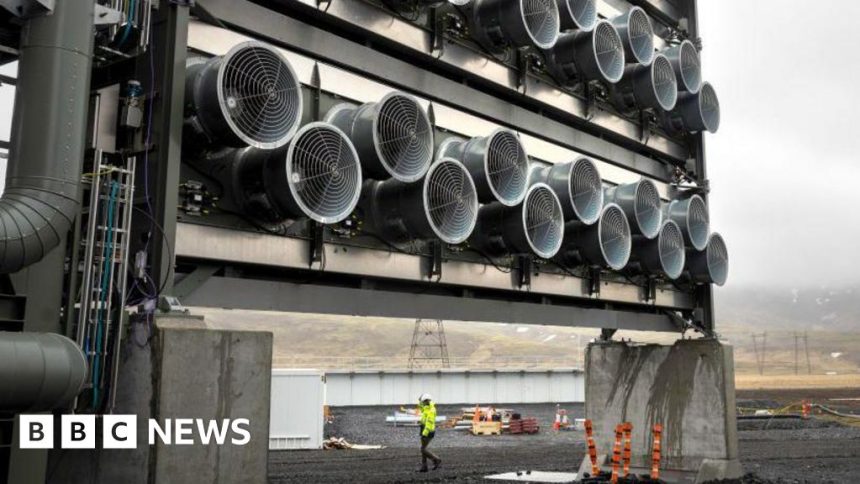Iceland’s Innovative Approach to Carbon Capture: A Breakthrough in Climate Solutions
Direct Air Capture Technology
A novel facility in Iceland is revolutionizing the way we think about carbon emissions by implementing a groundbreaking method for extracting and sequestering carbon dioxide directly from the air. This pioneering initiative showcases a significant step forward in combating climate change.
How It Works
The plant employs advanced direct air capture (DAC) technology, which involves large fans that draw in ambient air. Once inside, the CO2 is separated from other atmospheric components using chemical processes. After extraction, this greenhouse gas is then permanently stored underground or repurposed for various industrial applications.
Current Impact and Potential
Recent data indicate that this facility has the capability to remove approximately 4,000 tons of CO2 annually. While this may seem small compared to global emissions—estimated at over 36 billion tons per year—the technology exemplifies a scalable solution that can be expanded upon as demand increases and funding becomes available.
Advancements in Carbon Sequestration
This innovative method not only mitigates excessive atmospheric CO2 but also marks a crucial development towards achieving climate targets set forth by international agreements such as the Paris Agreement. As nations seek effective means to reach net-zero status by mid-century, projects like these are vital.
Future Prospects
With continued investment and research into DAC technologies globally, as of now—there are roughly six similar projects anticipated within Europe alone—it’s clear that techniques for carbon capture could soon become widespread practices contributing significantly to environmental preservation efforts.
Iceland’s new carbon-capturing facility serves not just as an impressive technological feat but also represents hope against climate change—a trend likely to inspire further innovations across different regions aiming for a sustainable future.
For more details on this subject: Explore Here






